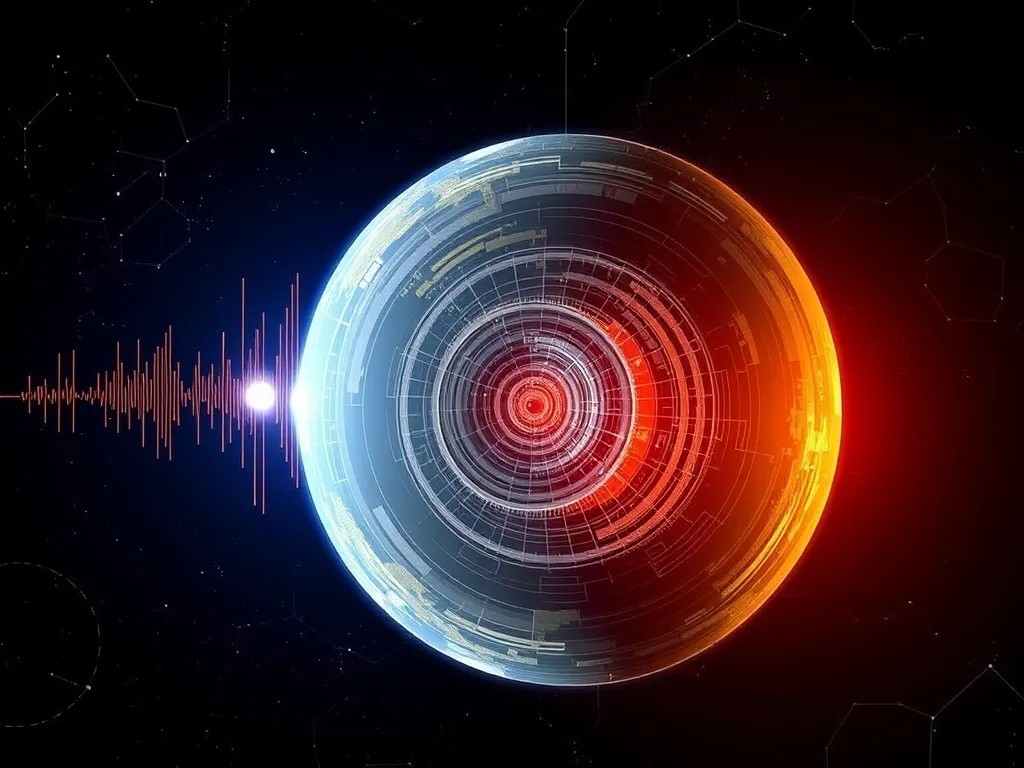In recent years, there has been a significant advancement in the field of Artificial Intelligence (AI) and Augmented Reality (AR). These technologies have become increasingly popular and have the potential to enhance virtual experiences in various fields such as gaming, education, healthcare, and...
Computer Learns to Predict Earthquakes Days Before They Strike

A Revolutionary Breakthrough in Seismic Science
For centuries, predicting earthquakes has been one of science's most elusive challenges. Unlike hurricanes or tornadoes, earthquakes have resisted accurate forecasting, often striking without warning and causing devastating loss of life and property. However, recent advancements in artificial intelligence and machine learning are changing this reality. Sophisticated computer systems are now learning to identify patterns and precursors that suggest an earthquake may occur days before it strikes.
This technological breakthrough represents a fundamental shift in how we approach seismic activity. By analyzing vast amounts of geological data, monitoring subtle ground movements, and detecting anomalies invisible to human observers, AI systems are beginning to crack the code of earthquake prediction.
How AI Systems Detect Earthquake Precursors
The key to earthquake prediction lies in identifying subtle warning signs that precede seismic events. Traditional seismology has struggled with this task because earthquakes involve incredibly complex interactions between tectonic plates, rock formations, and underground stresses. AI systems excel at this challenge by processing enormous datasets and recognizing patterns that would be impossible for humans to detect.
Multiple Data Sources Integration
Modern earthquake prediction systems combine information from diverse sources to build comprehensive pictures of seismic risk. These sources include traditional seismometer readings, GPS ground movement data, satellite imagery showing ground deformation, electromagnetic field measurements, and even changes in groundwater levels and gas emissions from fault lines.
Machine Learning Pattern Recognition
The AI algorithms analyze historical earthquake data alongside current measurements, learning to identify precursor patterns that consistently appear before seismic events. These patterns might include micro-earthquakes clustering in specific ways, gradual stress accumulation along fault lines, or subtle changes in the Earth's crust that occur days or weeks before a major earthquake.
Real-World Testing and Success Rates
Several research institutions and technology companies have deployed AI earthquake prediction systems in seismically active regions worldwide. Initial results have been promising, with some systems successfully identifying potential earthquakes several days in advance.
Case Studies from Active Regions
In Japan, researchers have tested machine learning models that analyze seismic wave patterns and ground deformation data. These systems have demonstrated the ability to provide warnings for moderate to strong earthquakes with increasing accuracy. Similarly, projects along California's San Andreas Fault have shown that AI can identify unusual seismic activity that often precedes larger events.
Accuracy and Reliability Challenges
- False positive rates requiring careful interpretation
- Variation in prediction accuracy based on earthquake magnitude
- Geographic differences in precursor signal clarity
- Time window uncertainty in predictions

The Technology Behind the Predictions
Earthquake prediction AI systems utilize several advanced technologies working in concert. Deep neural networks process seismic waveforms, identifying subtle patterns in the noise that precede earthquakes. Convolutional neural networks analyze satellite imagery to detect ground deformation patterns. Recurrent neural networks track temporal sequences of seismic events, learning how patterns evolve over time.
Continuous Learning and Improvement
One of the most powerful aspects of AI earthquake prediction is its ability to continuously improve. Each earthquake, whether successfully predicted or not, provides new training data that helps the system refine its algorithms. This means prediction accuracy should increase over time as the AI encounters more examples and learns from its mistakes.
Life-Saving Potential and Emergency Response
The implications of accurate earthquake prediction extend far beyond scientific achievement. Even a few days of advance warning could save thousands of lives and prevent billions of dollars in damage. Emergency services could pre-position resources, hospitals could prepare for casualties, and vulnerable infrastructure could be secured or shut down safely.
Evacuation and Preparation Time
With days of advance notice, authorities could organize orderly evacuations from high-risk areas, particularly important for vulnerable populations like hospital patients, school children, and elderly care facility residents. People would have time to secure their homes, gather emergency supplies, and move to safer locations.
Infrastructure Protection
Critical infrastructure operators could take preventive measures such as shutting down nuclear reactors safely, reducing water levels in dams, halting subway operations, and securing chemical plants. These actions could prevent secondary disasters that often cause as much damage as the earthquakes themselves.
Challenges and Future Developments
Despite impressive progress, earthquake prediction remains extremely challenging. Current AI systems still produce false alarms and occasionally miss significant events. Researchers emphasize that these systems should be viewed as probabilistic forecasting tools rather than definitive predictors.
Ethical and Social Considerations
Implementing earthquake early warning systems raises important questions about communication and public response. How should authorities balance the need to warn people against causing unnecessary panic? What economic impacts might occur from false alarms? These considerations require careful planning and public education.
Conclusion
The development of AI systems capable of predicting earthquakes days in advance represents one of the most exciting frontiers in disaster prevention technology. While challenges remain, the progress made in recent years suggests that reliable earthquake prediction may finally be within reach. As these systems continue to learn and improve, they promise to transform how humanity prepares for and responds to one of nature's most destructive forces, potentially saving countless lives in the process.



